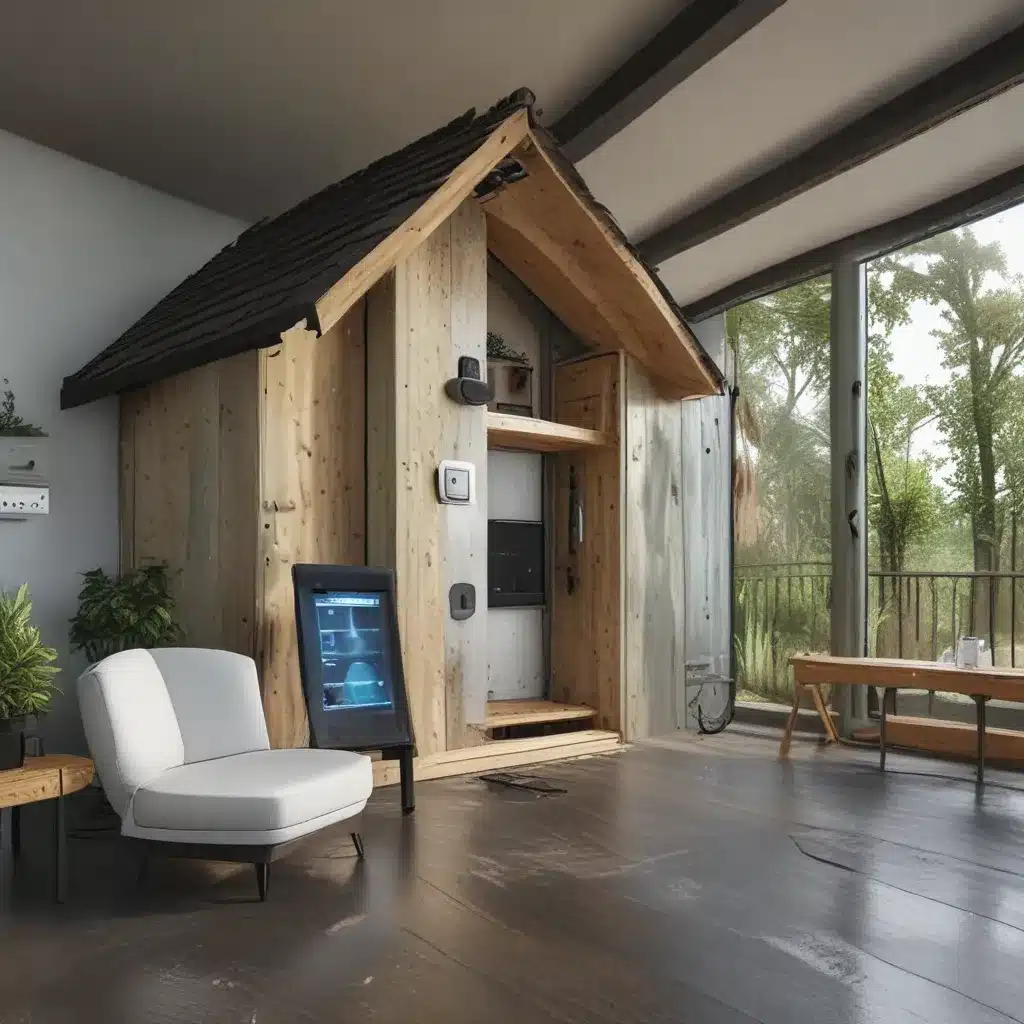Imagine this: you’re cozied up on the couch, binge-watching your favorite show, when suddenly the ground starts shaking. Books topple off the shelves, the lights flicker, and your smartphone pings with an emergency alert. An earthquake has struck, and it’s a big one. What do you do?
As an IT professional, I know a thing or two about disaster preparedness. In fact, I’ve made it my mission to help people like you protect their homes and families from the unexpected. That’s why I’m here today to talk about the incredible smart home technologies that can turn your abode into a veritable fortress against natural disasters.
Seismic Sensors and Early Warning Systems
Let’s start with perhaps the most crucial piece of the puzzle: early warning systems. Thanks to advancements in seismic monitoring, we now have the ability to detect the telltale signs of an impending earthquake and send out alerts before the shaking even begins.
According to the IEEE Public Safety Technology Initiative, these seismic sensors are no longer the old-school pen-and-pendulum contraptions of yesteryear. They’re part of a highly sophisticated Internet of Things (IoT) network, with edge computing capabilities that can process data and send out warnings in the blink of an eye. Imagine having those precious seconds to take cover before the ground starts moving.
But it’s not just earthquakes these systems can detect. They’re also adept at spotting underwater rumblings that could lead to tsunamis, like the one that struck Tonga in early 2022. The National Oceanic and Atmospheric Administration was able to issue a tsunami advisory that gave coastal areas valuable time to prepare for the incoming waves. Talk about a game-changer!
Structural Reinforcements and Shock Absorbers
Of course, early warning is only half the battle. You also need to ensure your home can withstand the shaking and shuddering of a major seismic event. That’s where earthquake-resistant building techniques come into play.
According to the IEEE, the key is to either deflect, absorb, transfer, or distribute the vibrations from an earthquake. This can be achieved through a variety of methods, from base isolators that allow the foundation to move separately from the rest of the structure, to seismic dampers that use hydraulics or friction to dissipate energy.
But it’s not just the big, structural elements that need attention. Nonstructural components like furniture, shelving, and HVAC equipment can also pose a serious threat during an earthquake, as a study in New Zealand showed. That’s why it’s crucial to ensure everything in your home is properly braced and secured.
The Materials of the Future
As impressive as these earthquake-proofing techniques are, the real game-changers might just be the materials of the future. Imagine a world where your home is coated in a protective “invisibility cloak” that deflects seismic waves, or where the very walls are made from shape-memory alloys that can flex and bend without breaking.
According to the IEEE, researchers are exploring all sorts of cutting-edge materials, from synthetic spider silk to fibers that can actually dissipate heat and dampen vibrations. And who knows what other marvels await us as the field of earthquake engineering continues to evolve?
Of course, these futuristic solutions aren’t quite ready for prime time yet. But the fact that they’re even being explored is a testament to the incredible strides we’re making in the fight against natural disasters. And let’s not forget about the more tried-and-true materials like steel and wood, which continue to be the backbone of earthquake-resistant construction.
Retrofitting and Seismic Analysis
But what if your home was built before all these fancy technologies came into play? Don’t worry, there’s still hope. According to the IEEE, seismic retrofitting is an incredibly important process for protecting people and property in seismic zones.
This can involve strengthening connections, adding steel frames, or even isolating the building’s base. And with the help of advanced seismic analysis techniques, engineers can model how a structure will perform during an earthquake and identify any weak points that need to be addressed.
The Department of Homeland Security has even been exploring the use of artificial intelligence and machine learning to help with these assessments, allowing us to spot subtle faults and risks that the human eye might miss.
Disaster Resilience Beyond Earthquakes
Of course, earthquakes aren’t the only natural disasters we need to worry about. Floods, hurricanes, and wildfires can also wreak havoc on our homes and communities. That’s why it’s important to take a holistic approach to disaster preparedness.
The National Flood Insurance Program, managed by FEMA, is a crucial part of this equation. By providing affordable flood insurance to millions of policyholders, the program helps homeowners and businesses recover faster when the waters recede. And with the rise of smart home tech, you can even integrate flood sensors and automatic shutoff valves into your home’s defenses.
But it’s not just about protecting the physical structure of your home. The Department of Homeland Security is also exploring ways to make our critical infrastructure more resilient – things like power grids, data networks, and transportation systems that can be just as vulnerable to natural disasters as our homes.
Turning Your House into a Fortress
At the end of the day, the key to disaster-proofing your home is to take a comprehensive, multi-layered approach. Early warning systems, structural reinforcements, cutting-edge materials, and resilient infrastructure – it’s all part of the equation.
But the good news is, you don’t have to go it alone. The team at IT Fix is here to help you navigate the world of smart home tech and disaster preparedness. Whether it’s installing seismic sensors, integrating flood protection systems, or even exploring the latest in earthquake-resistant construction, we’ve got the expertise to transform your humble abode into a veritable fortress against the forces of nature.
So don’t wait until the ground starts shaking. Take action today and give your home the disaster-proofing it deserves. Your family’s safety is worth it.













